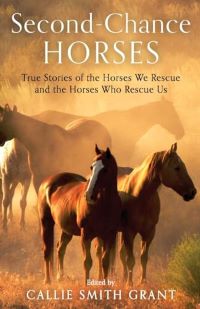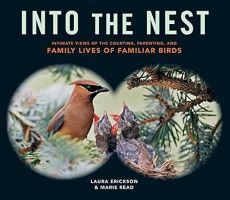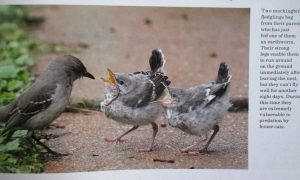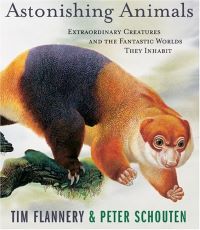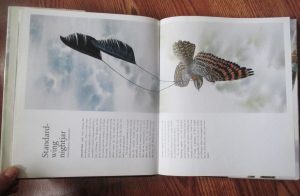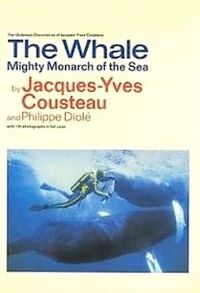An absolutely stunning book that I read in one sitting, while waiting for my kid at a library event. I actually paged through it twice, to look at all the images a second time around. It’s from a series organized to raise awareness of wildlife species that are at risk of extinction. Wildlife photographers donated their work to be included in the book, aiming to produce the most beautiful, stunning collection ever. Proceeds go to support the animals in question- whether that be for research studies, habitat preservation, educating locals to the animals’ value, etc. There are a few sections of text describing the animals, the work done to help them, the importance of giving them space in our world. While the text is brief, it felt very eloquent. In terms of the wild dogs (one of my favorite animals ever since I read Innocent Killers by Jane Goodall and Hugo van Lawick as a teen) the book emphasizes their place in the ecosystem, reasons they have been reviled by people for so long, and yet are so little known (they travel almost constantly, far and very fast). There’s a bit about their life history and physiology, too. Much of this was familiar to me, but I didn’t know before that the wild dogs (also known as Cape hunting dogs or painted wolves- even though they’re not closely related to wolves-) only have four toes on each foot (having diverged from canines farther back in evolutionary time) and that they sneeze at each other when communicating excitement for the hunt!
Majority of the book is the photographs. And they are absolutely gorgeous. I love the ones of the young puppies. And there are some with beautiful golden gaze. Many showing moments of peace, camaraderie in the pack, fast action of the hunt. From some of the earlier text explaining how the brutal-looking method wild dogs use to kill their prey isn’t as terrible as it appears (the victim goes into shock and supposedly feels very little pain) I was really expecting to see at least one photo with some gore or the dogs feeding on a kill, but there wasn’t any of that. So I don’t need to give any fair warning that something might shock a viewer.
Borrowed from the public library.
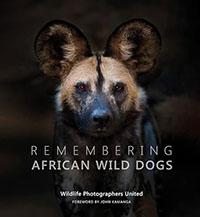
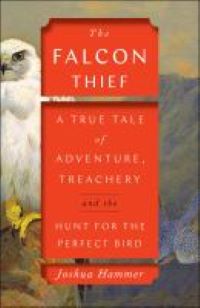
 Collection of drawings and sketches by the author/artist. Delightful and whimsical and random. At least, they seemed random at first- but when you get to the very end pages there’s a little description and explanation by the artist, about what inspired the piece, or what other story it was a part of, or what he thinks about the depicted object. The intro and these end-pages explanation bits are lovely reading, it is so solidly insightful and makes me feel appreciative (of art). I need to get my hands on more Shaun Tan! and see the animations done from some of his books- I didn’t even know they existed, before. The artwork is all so much fun, even if some have sad or lonely overtones. Most of them are of everyday objects combined or personified into little beings that interact or have some symbolic meaning. Not quite sure how else to describe it. I had spent days poring over all the pictures, looked through them all at least twice, and then was super happy to find the text at the back to read about, but then I couldn’t. Someone else had this one on request so I turned it in having only read four or five pages of the explanations, but I want to borrow it again to go through the rest, and look at the drawings all over again, of course.
Collection of drawings and sketches by the author/artist. Delightful and whimsical and random. At least, they seemed random at first- but when you get to the very end pages there’s a little description and explanation by the artist, about what inspired the piece, or what other story it was a part of, or what he thinks about the depicted object. The intro and these end-pages explanation bits are lovely reading, it is so solidly insightful and makes me feel appreciative (of art). I need to get my hands on more Shaun Tan! and see the animations done from some of his books- I didn’t even know they existed, before. The artwork is all so much fun, even if some have sad or lonely overtones. Most of them are of everyday objects combined or personified into little beings that interact or have some symbolic meaning. Not quite sure how else to describe it. I had spent days poring over all the pictures, looked through them all at least twice, and then was super happy to find the text at the back to read about, but then I couldn’t. Someone else had this one on request so I turned it in having only read four or five pages of the explanations, but I want to borrow it again to go through the rest, and look at the drawings all over again, of course.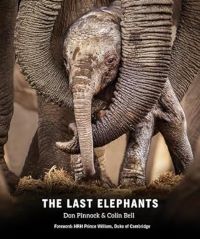 This thick, impressive coffee-table size book is all about the current state of elephants in Africa. As far as I can tell, the two compilers traveled the breadth of the continent collecting materials written about, and photographs taken of, elephants. The words are from conservationists, animal welfare workers, government policy makers, wildlife photographers, safari outfit organizers, big game hunting enthusiasts, field scientists, etc (probably some occupations I have got wrong and many others forgotten because I don’t have the book in front of me now). The photographs- many of them double-page spreads- are stunning and beautiful. The words are detailed, sober and expressive, though I have to admit some of them are on the other hand very straightforward and dry. The chapter written about policy makers and the problems caused when elephant populations cross boundaries of countries that have different ways of assessing and handling their numbers was particularly difficult to get through, if I recall. I did like best one chapter that was about two individual elephants, though now I can’t tell you anything about it. Personal stories always get me closer. And I was very struck by the section about how elephants and big trees co-exist. Namely, it was pointed out that the helpful work of people to provide more watering holes for elephants and other wildlife, actually has a negative impact on large trees- because if the elephants have easy access to water and stay in one place, they keep feeding on the same trees and damage them. In normal circumstances, they’d roam far between watering places, giving trees in one area time to recover and grow again, before they returned. And yet now they often can’t roam because of fences, roads, human habitation and other things blocking their path.
This thick, impressive coffee-table size book is all about the current state of elephants in Africa. As far as I can tell, the two compilers traveled the breadth of the continent collecting materials written about, and photographs taken of, elephants. The words are from conservationists, animal welfare workers, government policy makers, wildlife photographers, safari outfit organizers, big game hunting enthusiasts, field scientists, etc (probably some occupations I have got wrong and many others forgotten because I don’t have the book in front of me now). The photographs- many of them double-page spreads- are stunning and beautiful. The words are detailed, sober and expressive, though I have to admit some of them are on the other hand very straightforward and dry. The chapter written about policy makers and the problems caused when elephant populations cross boundaries of countries that have different ways of assessing and handling their numbers was particularly difficult to get through, if I recall. I did like best one chapter that was about two individual elephants, though now I can’t tell you anything about it. Personal stories always get me closer. And I was very struck by the section about how elephants and big trees co-exist. Namely, it was pointed out that the helpful work of people to provide more watering holes for elephants and other wildlife, actually has a negative impact on large trees- because if the elephants have easy access to water and stay in one place, they keep feeding on the same trees and damage them. In normal circumstances, they’d roam far between watering places, giving trees in one area time to recover and grow again, before they returned. And yet now they often can’t roam because of fences, roads, human habitation and other things blocking their path.